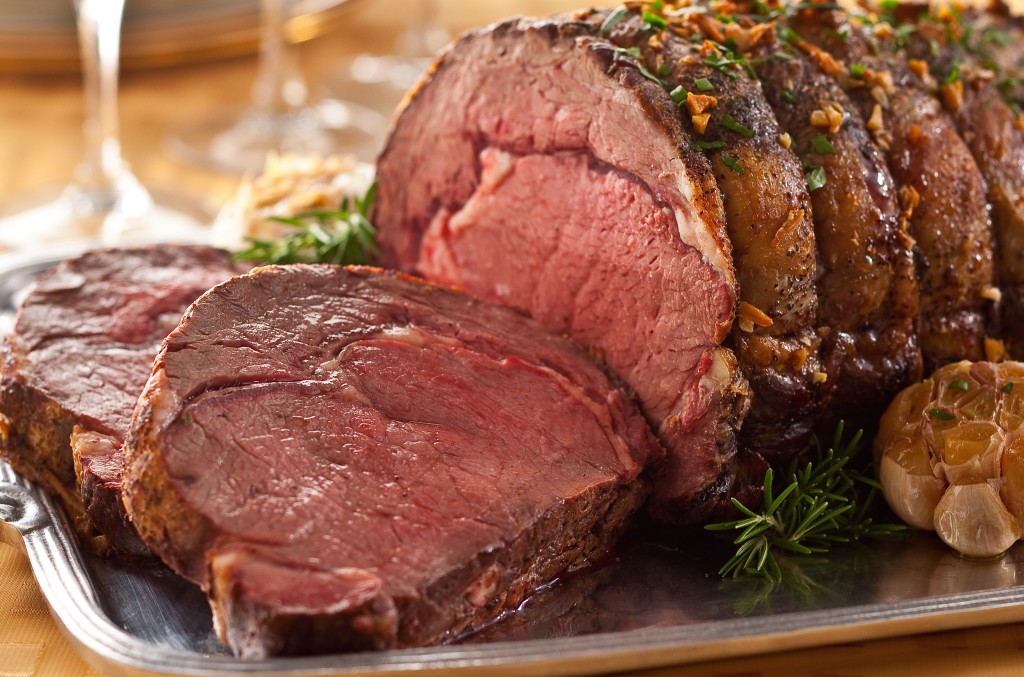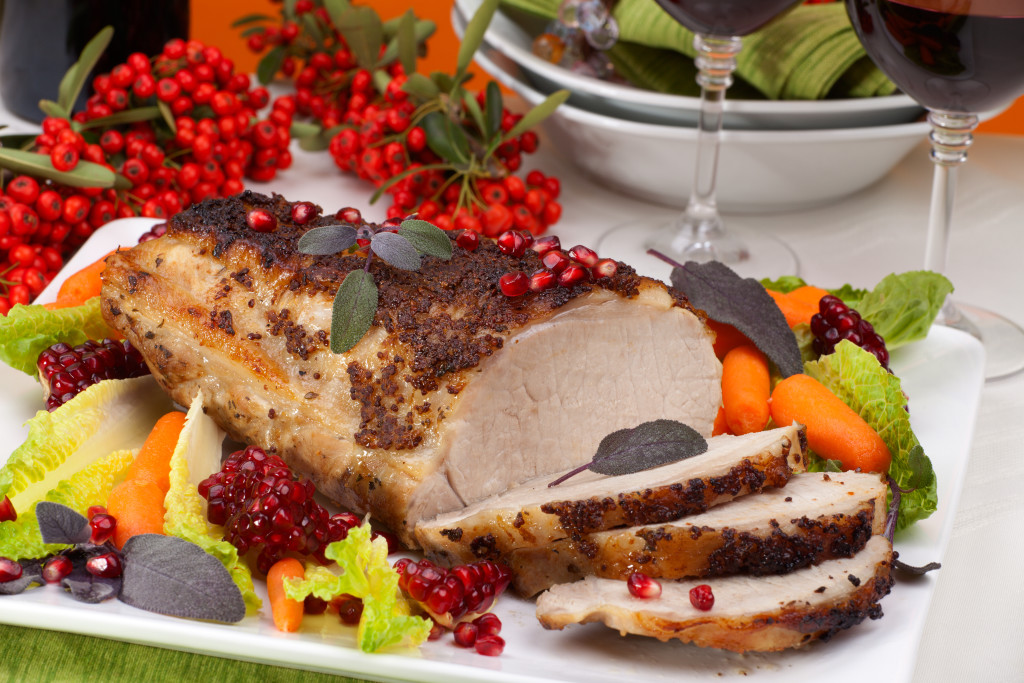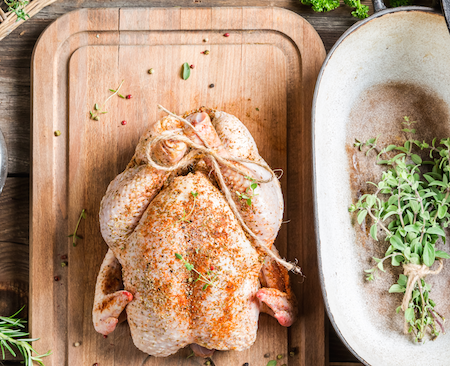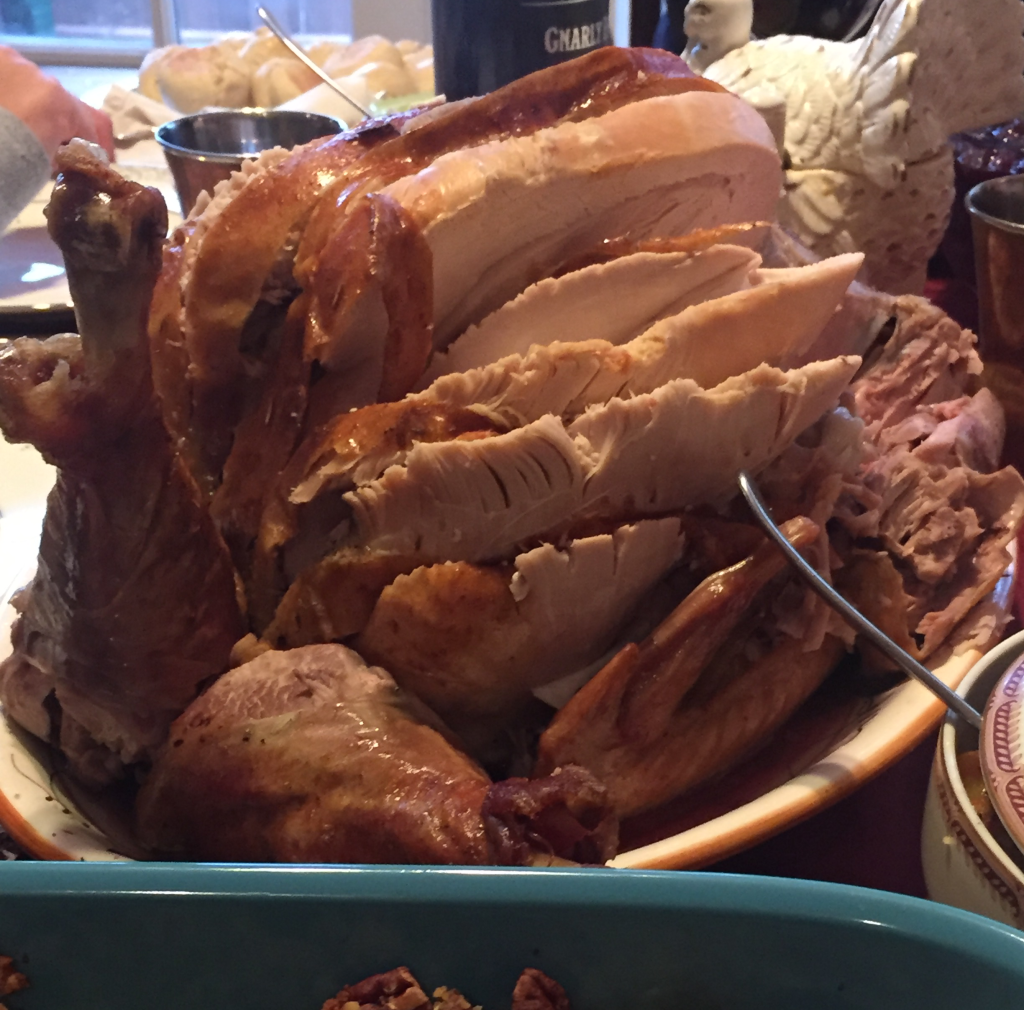The roast is the centerpiece of the meal, the pièce de résistance, the crown of the table, and what it tastes like is inevitably a topic of dinnertime conversation. The process of roasting is an ancient tradition that first took the form of placing a piece of freshly caught meat on the end of a stick and holding it above a flame.
For the most part, this method still remains today – although the methods we use are a bit refined. Today, roasting takes place in an oven or on a grill, with heat surrounding the meat, poultry, lamb or pork.
As we all know, the roast is a source of pride for the home chef. While roasting can be one of the easiest ways to cook a large cut of meat (beef, pork, lamb, or poultry), it can also be tricky. So, as the holidays arrive, and our thoughts turn to roasting for family meals and celebrations, what better time to revisit the essentials of roasting.
The Perfect Cut
Large cuts of meat (boneless and bone-in) ideal for roasting include rib of beef (prime rib), beef tenderloin or sirloin, shoulder of lamb, leg of lamb, loin of pork, pork shoulder, and of course, the turkey!
Inside our ovens, or our grills, we can recreate a truly perfect environment for fabulous results. Whichever recipe you choose – a traditional herb spiced bird or roast, or Cajun infused variety, the basic method will remain the same.
Before you get started, be sure you have reliable roasting equipment on hand. Check our Essential Tools article (page 3), for a complete list. The right equipment will help you transform that large cut of meat into a succulent, delicious meal perfect for a celebration.
Once you have the essential tools, decide on which recipe you will prepare, and gather all the essential ingredients. Try seasoning the night before you plan to roast, as this will allow the seasonings time to penetrate the meat.
Searing the Meat
Before you start roasting, it is important to sear the meat to caramelize the sugars and brown the proteins in the meat. Not only is the result more appealing, but the flavor of the roast is intensified.
To sear, have the meat at room temperature to allow its natural moisture to reabsorb into the muscle. If you haven’t already, season the cut accordingly, and heat a pan to hottest level.
If searing lean cuts of meat (such as chicken, lean beef, or pork tenderloin), you will need to add some fat to the pan. Use a vegetable or peanut oil, because olive oil and butter have too low of a smoke point.
Sear for a few minutes before flipping. The pan drippings can be used to make gravy by deglazing.
A few items to remember when searing:
* Make sure the oil is hot – when it starts to ripple.
* Place the roast fat side down
* Be careful because the oil will spit
* Not hot enough and the meat will stick/tear when turned.
* Don’t start to cook the meat – Once the meat begins to color, turn and sear other side.
Alternately, if not searing on the stovetop, place the meat in the oven and cook for 20 to 30 minutes at the high temperature. Then lower the temperature to between 275°F and 325°F until the roast is done.
Whether roasting in the oven or on the grill, roasting at low temperatures (between 275°F and 325°F) provides the most flavorful, juicy and tender results. This lower temperature also help minimize shrinkage and help the meat cook more evenly. In generally, the larger the cut of meat, the lower the roasting temperature should be.
Set the seasoned (and seared) roast on a rack, with the fat side up, in a roasting pan. Using a rack (rather than placing the roast directly on the bottom of the pan) promotes even airflow. Don’t cover the pan.
Cook according to recipe. To check if the roast is finished, insert the thermometer probe into the center of the roast, being careful not to hit bone.
Grill Roasting
If roasting on the grill, turn all burners on to preheat a gas grill (or light the charcoal) 20 minutes before you put your meat on the grill.
Remember, roasting requires indirect heat surrounding the roast, so when grilling, the meat/poultry/fish must be placed over a flame-free area. To do this, turn off one burner on the gas grill (or push coals to one side). Then, place the meat/poultry/fish over the flame-free section.
Don’t forget to let the roast rest (covered in foil) 15 to 20 minutes before carving. This time is important to allow the meat’s natural juice to reabsorb into the entire cut of meat – and not spill out all over your cutting board!
Internal Temperature Guide
USDA Recommended Safe Minimum Internal Temperatures
* Steaks & Roasts – 145 °F
* Fish – 145 °F
* Pork – 160 °F
* Ground Beef – 160 °F
* Egg Dishes – 160 °F
* Chicken Breasts – 165 °F
* Whole Poultry – 165 °F
A brief lesson in cooking methods:
Grilling – heat applied to the food from beneath
Broiling – the direct source of heat is from above
Roasting – the heat surrounds the food in the pan – indirect heat.
Baking – the heat surrounds the food, but that term is used to refer the ‘cooking’ of a mixture of ingredients.









